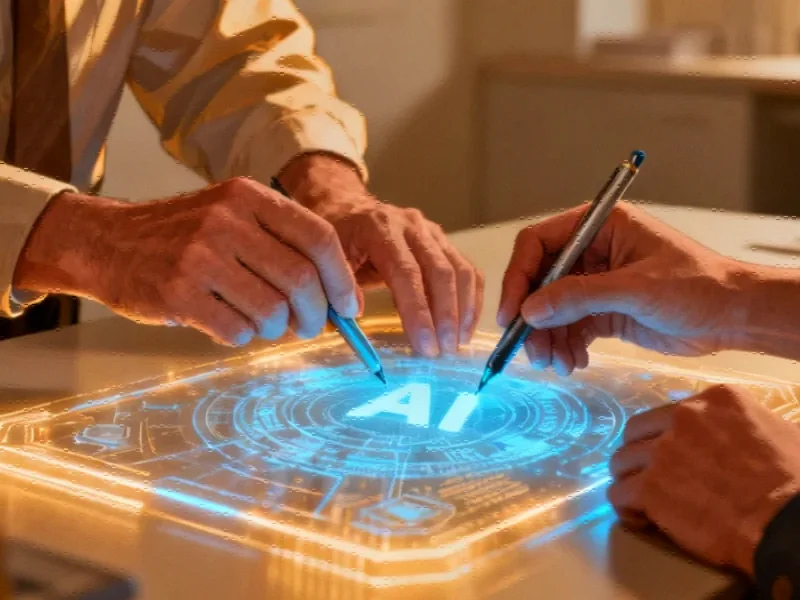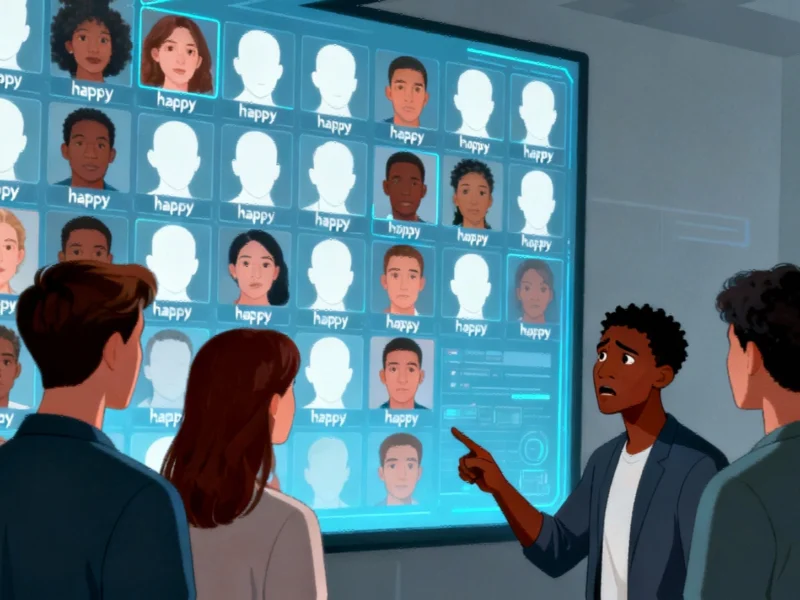Revolutionizing Retinal Imaging Analysis
In a groundbreaking development for medical AI, researchers have created a deep learning system that automatically generates comprehensive diagnostic reports from retinal optical coherence tomography (OCT) images. This innovation addresses critical challenges in ophthalmology where increasing patient volumes and complex imaging data have stretched specialist resources thin. Unlike general-purpose language models that often produce vague or clinically insignificant reports, this specialized system delivers precise, actionable insights comparable to those written by experienced ophthalmologists.
The technology represents a significant leap beyond conventional automated diagnosis methods, which typically perform simple classification of OCT images. Instead, this system generates full descriptive reports that detail anatomical structures, identify pathological conditions, and provide clinical context—all with remarkable accuracy and consistency. Early assessments indicate the potential to reduce ophthalmologists’ report writing time by nearly 60%, offering substantial workflow improvements in clinical settings.
Technical Innovation Behind the Breakthrough
At the core of this advancement is a sophisticated multi-scale module with attention mechanisms that effectively fuses features from different levels in image encoders. The system processes two retinal OCT images taken from different perspectives, integrating them at various network stages to create comprehensive feature representations. This approach enables the model to focus on clinically relevant regions while maintaining context across the entire image.
The technical architecture represents a significant evolution from standard encoder-decoder models used in conventional image captioning. Traditional methods often struggled with medical imaging because they applied the same semantic encoding vector for each decoding step, failing to account for the fact that different words in a medical report should depend on different image regions. The incorporation of attention mechanisms and multi-scale feature fusion allows for more nuanced and clinically accurate reporting.
This technological progress aligns with other related innovations in computational analysis that are transforming how we process complex visual data across multiple industries.
Comparative Advantages Over Existing Technologies
When evaluated against state-of-the-art algorithms and generalized large language models, the specialized system demonstrated superior performance in multiple dimensions. In blind grading tests conducted by retinal subspecialists, reports generated by the system were rated comparable to those written by ophthalmologists and significantly better than outputs from generalized vision-language models.
Notably, the system achieved high classification accuracy for 16 different pathologies and 37 types of descriptions, addressing a critical limitation observed in general-purpose models. Earlier attempts using models like GPT-4 and MiniGPT-4 revealed serious clinical risks, including confusion between normal conditions and pathological ones—a problem largely mitigated in this specialized approach.
The system’s capabilities reflect broader industry developments in high-resolution data analysis that are enabling more precise diagnostic capabilities across medical specialties.
Clinical Impact and Practical Applications
The implications for clinical practice are substantial. By delivering standardized, referable diagnostic reports, the system significantly expedites diagnostic procedures while maintaining high accuracy levels. This efficiency gain is particularly valuable in time-sensitive situations where rapid diagnosis can influence treatment outcomes.
Perhaps most importantly, the technology holds promise for addressing healthcare disparities in remote areas with limited access to ophthalmological expertise. The system can assist general practitioners in making preliminary assessments and determining appropriate referral pathways, thereby improving access to specialized care in underserved regions.
This advancement in medical AI is part of a larger trend of recent technology transforming diagnostic medicine, where automated systems are increasingly capable of handling complex analytical tasks previously reserved for specialist physicians.
Implementation Challenges and Future Directions
Despite its promising performance, the research team acknowledges several limitations and challenges. The current system is specifically designed for OCT images and cannot be directly applied to other medical imaging modalities without significant modification. Additionally, evaluating the quality of automatically generated medical reports presents methodological challenges, as traditional metrics like precision and recall may not fully capture clinical relevance and nuance.
The researchers employed multiple evaluation strategies, including text-quality metrics and expert assessments using Likert scales, to provide comprehensive performance analysis. Future work will focus on enhancing the model’s sensitivity to subtle lesions and expanding its capabilities to additional languages through dataset translation and retraining.
These developments in medical imaging analysis parallel advances in other fields, such as the market trends in materials science where sophisticated modeling techniques are enabling new insights into complex physical processes.
Broader Implications for Medical AI
This research represents a significant milestone in the application of AI to specialized medical domains. By demonstrating that purpose-built systems can outperform generalized large language models in specific clinical contexts, it highlights the importance of domain-specific training and architecture design. The success of this approach suggests a promising direction for future medical AI development—one that prioritizes clinical accuracy and integration into existing workflows over general-purpose capabilities.
As healthcare systems worldwide face increasing pressure to deliver more efficient and accessible care, technologies that augment rather than replace clinical expertise will become increasingly valuable. This retinal OCT reporting system exemplifies how AI can serve as a powerful tool for specialists, enhancing their capabilities while maintaining the essential human judgment that remains central to quality medical care.
The development of specialized AI systems for medical applications continues to accelerate, offering new possibilities for improving diagnostic accuracy, expanding access to care, and optimizing clinical workflows across the healthcare spectrum.
This article aggregates information from publicly available sources. All trademarks and copyrights belong to their respective owners.
Note: Featured image is for illustrative purposes only and does not represent any specific product, service, or entity mentioned in this article.



